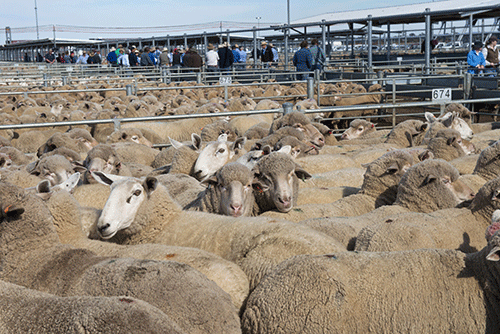The Namibian sheep sector recorded strong marketing activities during the first quarter of 2023, which kept the industry well on the recovery path at a growth rate of 47%.
In total, over 163 547 heads of sheep were marketed in the first quarter of 2023, which is an increase when juxtaposed to the 111 374 heads of sheep marketed during the same period last year.
The improvement in marketing activities has greatly benefitted all three marketing segments that recorded growth during the period under review.
The exportation of live sheep stood at 118 853 heads during the first months of 2023 in comparison to the level of 87 081 witnessed during the same period of 2022, thus registering an increase of 36.5%.
Despite this strong growth, live exports lost 5.5% market share, accounting for 72.7% of total marketing, compared to 78% last year.
Up to 99.6% of all sheep exports were destined to South Africa, while the remainder 0.4% was destined to Botswana (174), Angola (317) and Zambia (34).
About 89% of live sheep exported were destined for South African abattoirs – mostly in the Northern Cape.
South African feedlots absorbed 10% of sheep exports, and the remaining 0.5% were destined for farming use.
The resumption of slaughtering activities at the Farmers Meat Market Mariental abattoir has yielded positive results for the slaughtering sector.
Export-approved abattoirs tripled their throughput during the first quarter of the year by registering a growth of 385.7%, a result of producers responding to good prices offered by local export-approved abattoirs.
A total of 24 360 sheep were slaughtered at export-approved abattoirs and constituted 14.9% of total marketing.
This represents an additional market share of 10% to the 4.5% recorded in the first quarter of 2022.
Throughput at B&C-class abattoirs stood at 20 334 heads by the end of the first quarter of 2023 in contrast to the 19 277 heads marketed during 2022, a growth of 5.5%.
Local abattoirs market share stood at 12%, having lost 4.9% from the 17% share of the first quarter of 2022.
Namibian export-approved abattoirs on average paid better producer prices than the Northern Cape Abattoirs during the first quarter of 2023, recording a positive price differential of N$4.66/kg within the A2 sheep grade.
It is noteworthy that Farmer’s Meat Market was able to tap into the lucrative Norwegian market during the 2023 period, which remains a contributing factor towards improved sheep producer carcass prices.
Meanwhile, the goat sector’s marketing during the first quarter of 2023 dropped by 13.5% in comparison to the first quarter of 2022.
A total of 20 046 heads were marketed during the 2023 period, relative to 23 184 heads marketed during a similar period in 2022.
Live exports of goats declined by 15.0% during the quarter under review, recording 19 616 heads in comparison to 23 077 heads marketed in the 2022 comparable quarter.
From the total number of goats marketed during the first quarter of 2023, 97.9% were live exports, while B&C class abattoirs absorbed 2% of all animals marked.


